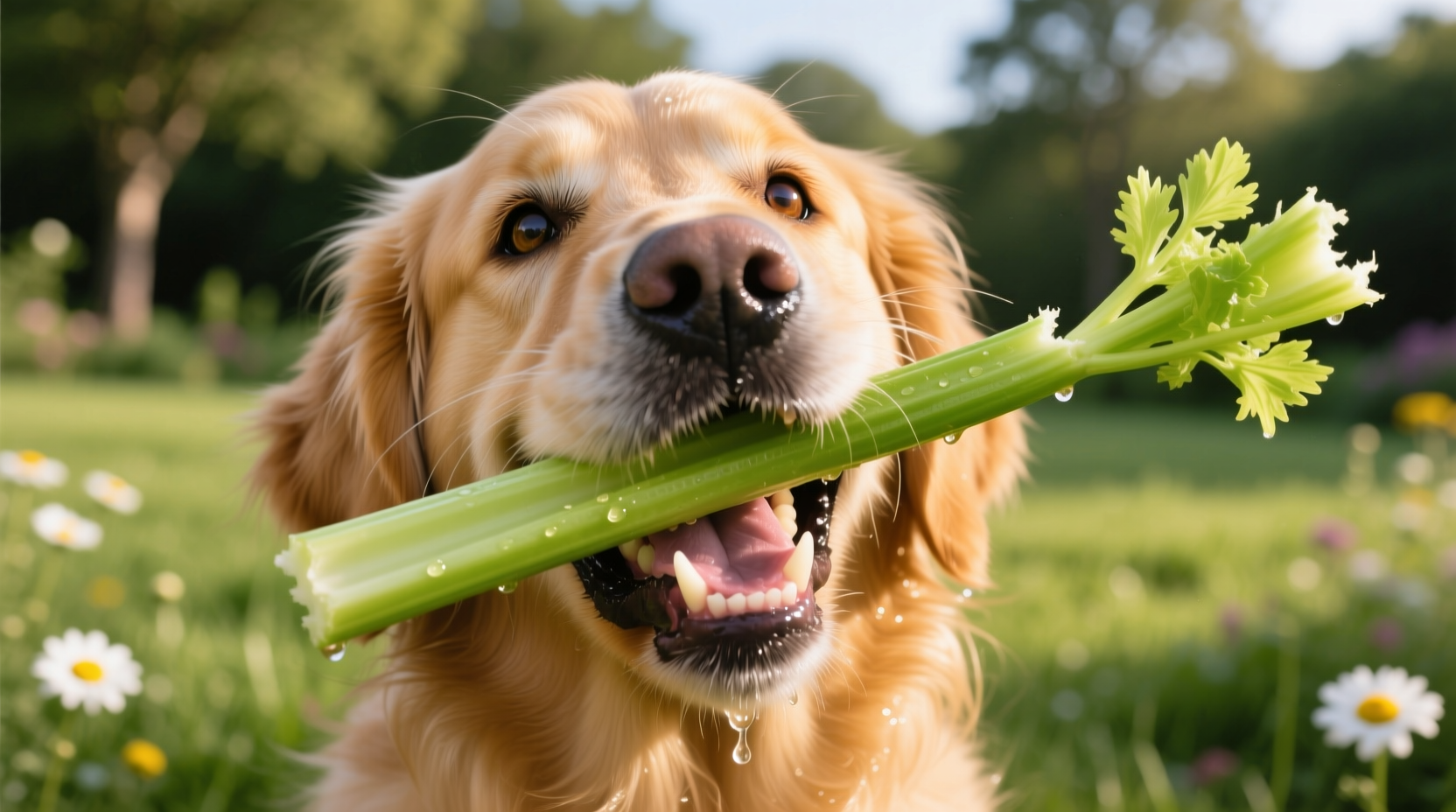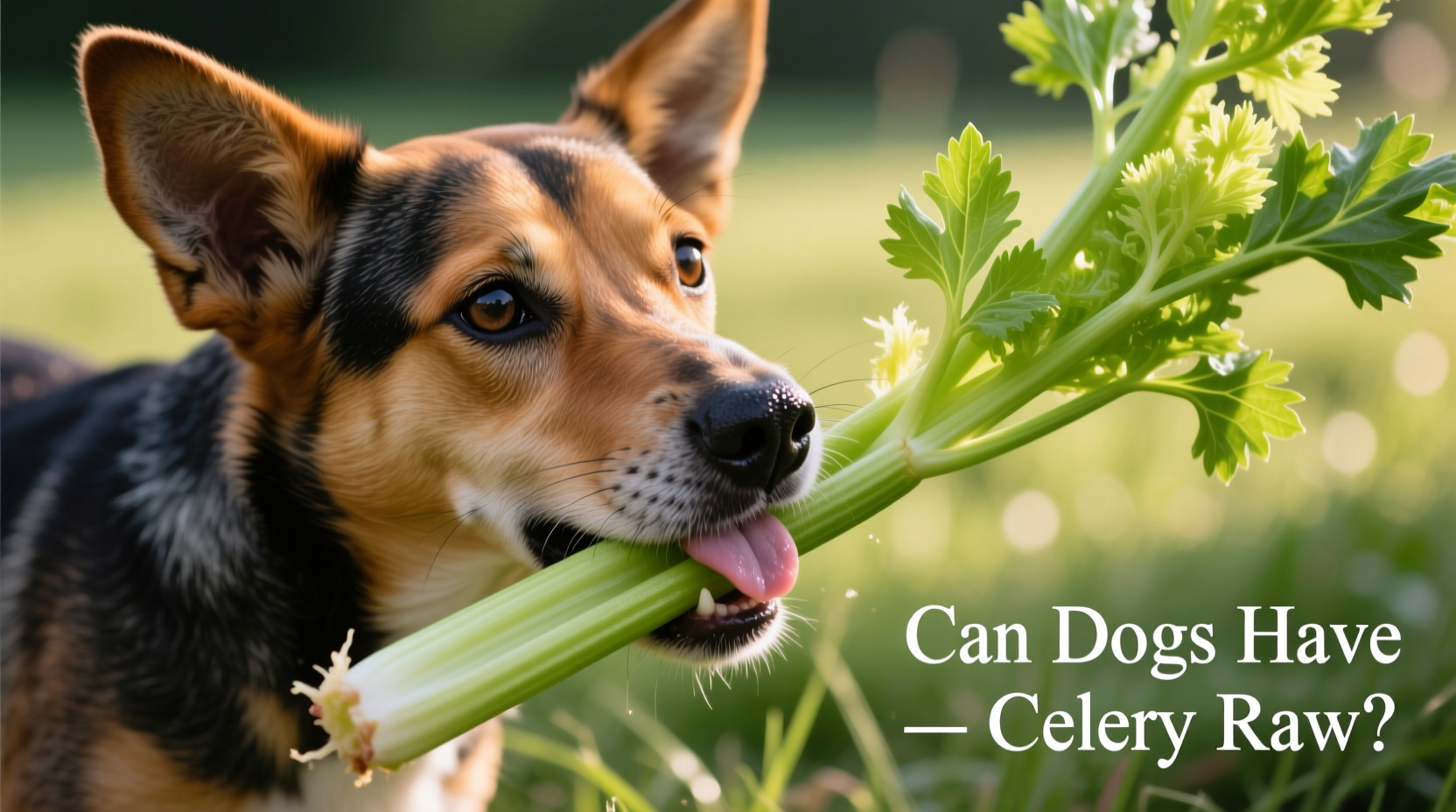As a pet owner, you've likely wondered which human foods are safe for your canine companion. With rising concerns about pet obesity and the growing trend of incorporating fresh foods into dog diets, understanding the safety of common vegetables like celery has become essential. According to the ASPCA Animal Poison Control Center, celery ranks among the safest human foods for dogs when served correctly.
Nutritional Value of Celery for Dogs
Celery's impressive nutritional profile makes it a potentially valuable addition to your dog's diet. This crunchy vegetable consists of approximately 95% water, making it an excellent hydrating snack, especially during warmer months. The remaining 5% contains essential vitamins and minerals that support canine health.
| Nutrient | Per 100g Celery | Benefit for Dogs |
|---|---|---|
| Vitamin A | 22 mcg | Supports vision and immune function |
| Vitamin K | 29 mcg | Essential for blood clotting and bone health |
| Potassium | 260 mg | Regulates fluid balance and muscle function |
| Dietary Fiber | 1.6 g | Aids digestion when given in appropriate amounts |
Benefits of Raw Celery for Canine Health
When properly prepared and served in appropriate portions, raw celery offers several health advantages for dogs:
- Natural hydration boost - The high water content helps maintain proper hydration levels, particularly beneficial for dogs that don't drink enough water
- Low-calorie treat option - With only 16 calories per 100g, celery serves as an excellent snack for dogs needing weight management
- Dental health support - The crunchy texture can help reduce plaque buildup through natural chewing action
- Digestive aid - The fiber content promotes healthy digestion when given in appropriate amounts

Safety Considerations and Potential Risks
While celery is non-toxic to dogs, certain preparation methods and serving sizes are crucial for safety. The Cornell University College of Veterinary Medicine emphasizes that improper preparation turns even safe foods into potential hazards.
Choking and Digestive Hazards
The fibrous strings in celery stalks pose significant choking risks, especially for small dog breeds. These strings can also cause digestive discomfort or even intestinal blockages if consumed in large quantities. To mitigate these risks:
- Always remove the fibrous strings using a vegetable peeler
- Cut celery into small, bite-sized pieces (½ inch or smaller)
- Consider steaming celery briefly for puppies or senior dogs with dental issues
Portion Control Guidelines
Overfeeding celery can lead to digestive upset. Follow these portion recommendations based on your dog's size:
- Small dogs (under 20 lbs): 1-2 small pieces (½ inch each), 2-3 times weekly
- Medium dogs (20-50 lbs): 3-4 small pieces, 2-3 times weekly
- Large dogs (over 50 lbs): 4-5 small pieces, 2-3 times weekly
How to Safely Introduce Celery to Your Dog's Diet
When adding any new food to your dog's diet, gradual introduction is essential. Follow this step-by-step approach:
- Start with a single small piece (¼ inch) of thoroughly washed, string-removed celery
- Monitor your dog for 24 hours for any adverse reactions
- Gradually increase portion size over 1-2 weeks if no issues occur
- Never replace regular meals with celery—treats should comprise no more than 10% of daily calories
Signs of Positive Reaction
- Normal digestion (well-formed stools)
- Increased hydration
- Enjoyment of the treat without reluctance
Signs to Discontinue Use
- Excessive gas or bloating
- Diarrhea or vomiting
- Loss of appetite for regular food
- Chewing difficulties or signs of oral discomfort
When to Avoid Celery Completely
Certain medical conditions make celery inappropriate for some dogs. Consult your veterinarian before offering celery if your dog has:
- History of kidney stones (celery contains oxalates)
- Known digestive sensitivities
- Recent gastrointestinal surgery
- Diabetes (though celery has low sugar, consult your vet)
Healthy Alternatives to Celery
If your dog doesn't enjoy celery or shows adverse reactions, consider these equally safe vegetable alternatives:
- Cucumber slices (similar hydration benefits)
- Carrot sticks (rich in beta-carotene)
- Green beans (excellent low-calorie option)
- Blueberries (packed with antioxidants)
Remember that vegetables should supplement—not replace—your dog's balanced commercial diet or veterinarian-approved homemade meals.
Final Recommendations from Veterinary Nutritionists
The American College of Veterinary Nutrition recommends that pet owners treat human foods as occasional supplements rather than dietary staples. When prepared correctly and served in appropriate portions, raw celery can be a healthy, hydrating treat that most dogs enjoy. Always prioritize your dog's individual health needs and consult with your veterinarian before making significant changes to their diet.











 浙公网安备
33010002000092号
浙公网安备
33010002000092号 浙B2-20120091-4
浙B2-20120091-4